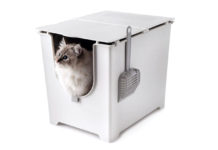Your website may be built with all the bells and whistles you can think of, but whilst bells and whistles may be for a car, it doesn’t necessarily ring true for a website. All those unnecessary features can slow up your site significantly, and as you may be aware, the speed of your site is of prime importance. Your website visitors will undoubtedly be more impatient than a 2-year old, and they often have the attention span of children of the same age. This isn’t trying to demean web users – it is just the way things are, especially in this day and age of competition. Users are now savvier than ever, and if your website doesn’t live up to their expectations, it would be easy for them to leave. Your website needs to load within a mere 2 seconds, and this could be a real challenge. So how can you vastly enhance the performance of your website in 2021? Let’s find out.
Go for multiple CDN
It is entirely possible to cut the requests from your site to less than half and save as much as 60% of your bandwidth with one simple change. However, if you aren’t yet hosting your website files using a content delivery network or CDN, your website can’t live up to its full potential.
CDN enables your website files to be hosted on a vast server network around the globe, and once you have a visitor, the server geographically nearest to that user will serve your website to them. As such, you can spread your bandwidth across various servers so you can decrease the load on one server. But if you want to take it a step higher, you can upgrade to multiple CDNs. Multiple CDN setups make use of – you guessed it – multiple content delivery networks from various providers at the same time. With this, you can have a more stable and better website.
Compress and optimise your files and images
As confirmed by website experts like Expre Digital Ltd, did you know that your files for images can take up to 60% of the loaded bytes for each page? This is a lot more compared to video, CSS, and scripts. You can try to compress and optimise your files and images, and you can do this by compressing the files prior to loading them onto your website. You can use online platforms like TinyPNG or Compressor.io, for instance. You can also compress your site images by using software such as PhotoShop.
The best is to keep the sizes of your images not more than 150KB and keep them less than 1920px. You should also educate yourself about the types of images you use. For instance, JPG is suitable for photographs that don’t need a highly detailed appearance, and PNG is ideal for transparent backgrounds, such as your logo. SVG, meanwhile, is highly suited to images that visitors could potentially want to zoom in on.
Focus on caching
With caching, you can keep website pages stored locally temporarily so you can save on bandwidth as well as enhance your site’s overall performance. When you have a visitor, they can then see your site’s cached version. When you cache your website pages, your visitors are more likely to stay because their experience will be more enhanced from the beginning.







